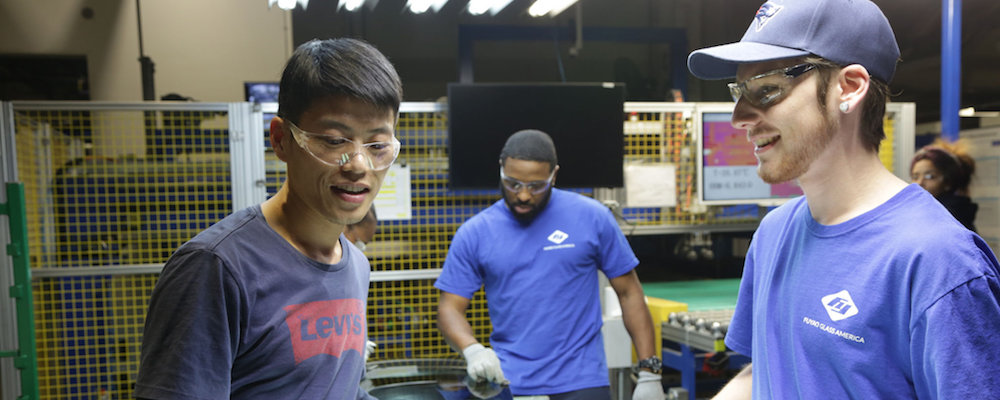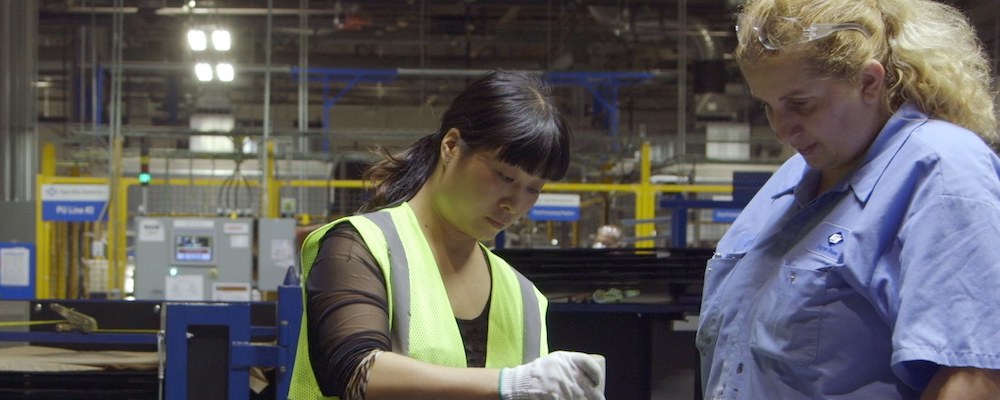Netflix’s ‘American Factory’ Uses the Story of an Industrial Town to Explore Globalism
Sandra Miska
The plight of an industrial town is the center of the compelling Netflix documentary “American Factory.” Filmmakers Steven Bognar and Julia Reicher traveled to Ohio to tell the story of a depressed community that is revived by an unlikely entity. The film is the first of several to come out of Netflix’s partnership with Barack and Michelle Obama’s Higher Ground Productions. Through this venture, the former First Couple set out to tell compelling stories that speak to our world today, and they certainly succeed here.
“American Factory” starts off with a flashback to December 2008, when a Geneal Motors truck-assembly plant in Moraine, Ohio rolls its final vehicle off of the line. With 2,000 people now out of jobs, the town seems destined to become another Flint. That is, until 2014, when the plant is reborn thanks to one Cao Dewang, a Chinese investor who swoops in and purchases the plant, reopening it as Fuyao Glass America, manufacturer of windshields and auto glass. While many workers are grateful for the employment this new factory brings, the cloud over the town hasn’t completely dissipated. One single mother returning to work reveals that her new wage is only 12 dollars an hour, a far cry from the almost 30 dollars she was earning at GM. Another older woman admits that even with her new job at Fuyao, she still can’t afford to move out of her sister’s basement.
In a twist, a handful of Chinese workers are sent to Ohio to work alongside the Americans, and an intriguing clash of cultures ensues. It’s amusing to learn about American stereotypes through the eyes of the Chinese, both positive and negative. One major difference is the lack of uniformity among the American workers. During their orientation, the incoming Chinese are told that America is a place where they can let their personalities shine. Later, one of the Chinese bosses reminds the others of how useful flattery is when getting the Americans to bend to their will.
Despite their obvious differences, the heart of “American Factory” is the camaraderie that develops between the American and Chinese workers. As Moraine is in the middle of Trumpland, one wouldn’t think that the people would warm to foreign workers, and while they don’t exactly becomes fast friends, a mutual respect and even love eventually arises. One white American man speaks of how he came to better respect his Chinese coworkers after discovering that they have left their families behind to come to Ohio and work with no additional pay. The same man invites his new “brothers” over for Thanksgiving, and humorous snapshots reveal the Chinese guests posing with guns like action movie stars. This bonding also extends to the higher-ups. In one of the more emotionally-charged moments, an American C.E.O. tears up after attending the Fuyao Christmas celebration in China, a splashy, visually-stunning event with scores of entertainers and even a mass wedding.
Bognar and Reicher also offer a fascinating glimpse into the lives of the workers in China, making the differences between the two cultures clear to the American viewer. While American unions have made it possible for our workers to have full lives outside of their 40-hour work weeks, their Chinese counterparts work 12-hour days, with weekends being a foreign concept. One young mother even reveals that she had to send her kids to live with relatives and can only afford to see them once a year. Still, the Americans come away impressed with the work ethic of the Chinese, and one American supervisor on the China trip attempts to implement some of their protocol when he returns to Ohio, with amusing results. At the end of the day, Bognar and Reicher do an admirable job of making the case that both cultures have something to offer the other.
The tension in “American Factory” lies in the struggle to bring a union to the plant, a terrifying prospect to Dewang. The American workers want to go back to having the rights they had under GM, while the Chinese executives, and even most of the American bosses, fear a union would harm productivity. But it’s clear who has the upper-hand here, and the documentary serves as a poignant reminder that the United States isn’t the superpower it once was.
“American Factory” begins streaming Aug. 21 on Netflix.



